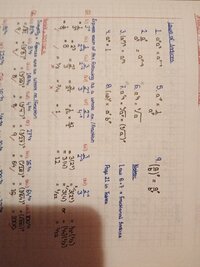MuddledMaths
New member
- Joined
- Oct 10, 2022
- Messages
- 23
Hey, Can someone explain how you simplify something like 16/√2 (sixteen over root two) into a power of 2?
The answer is 2 to the power of 1/8 but I'm not sure how you get that.
Thanks in advance and sorry for bothering anyone, I know it might be a stupid question, but I just don't get it.
The answer is 2 to the power of 1/8 but I'm not sure how you get that.
Thanks in advance and sorry for bothering anyone, I know it might be a stupid question, but I just don't get it.

